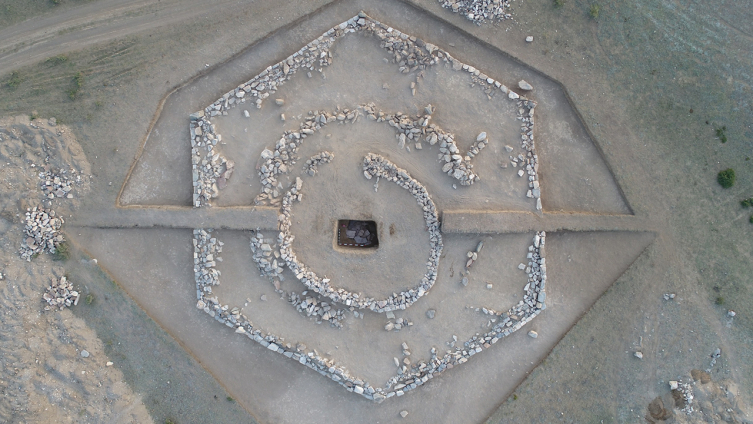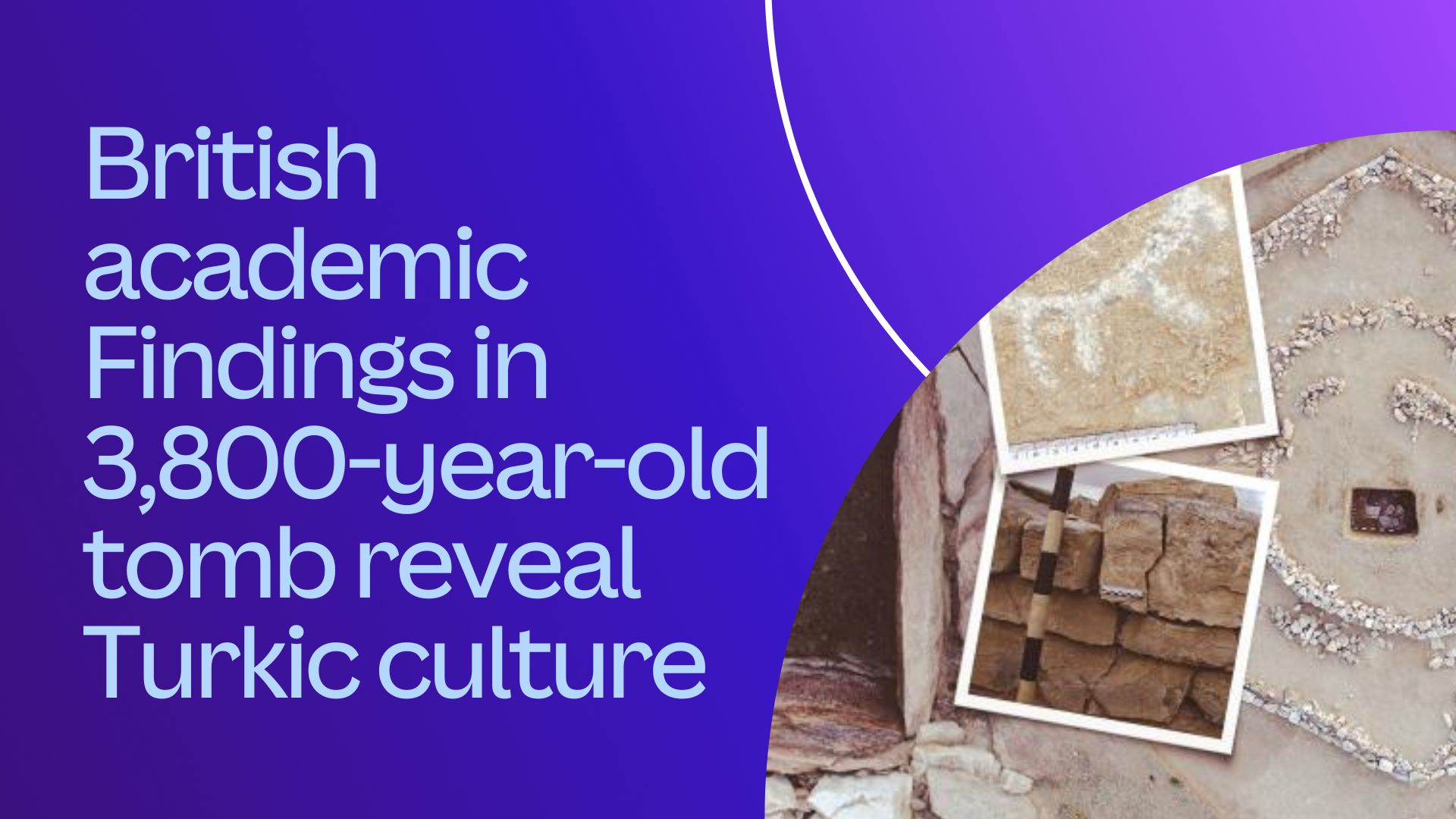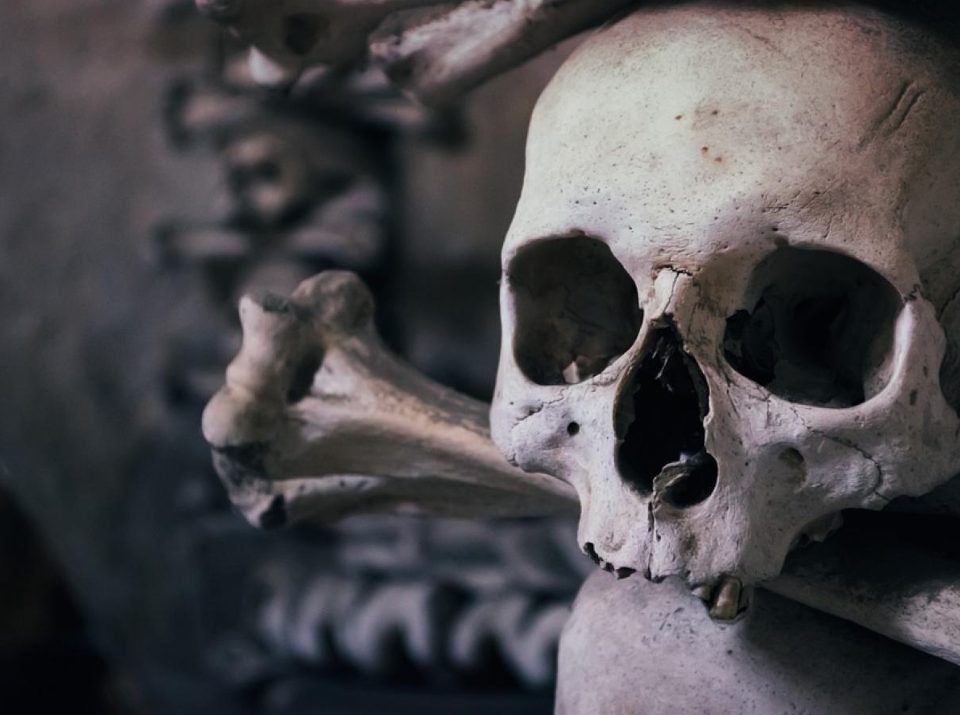A new discovery has been made in Kazakhstan that could change Turkish history.
Kazakh archaeologists found a hexagonal-shaped kurgan built 3,800 years ago in East Kazakhstan. On the entrance columns of the kurgan, 20 rock paintings with camels and horses were identified.
The news about the 3,800-year-old Turkish hexagonal kurgan was first announced by TRT Haber.
Dr. Rebecca Roberts from the University of Cambridge made special evaluations to TRT Haber regarding the Kırküngir kurgan and rock paintings.
Dr. Rebecca Roberts underlined that the hexagonal tomb discovered in the Abay region of Kazakhstan represents an extraordinary contribution to the overall evidence of stone-built funerary architecture in the territory of Kazakhstan during the Bronze Age.

Dr. Roberts says there are many structures like these tombs in Kazakhstan:
“During the Bronze Age in Kazakhstan, we find larger structures like this, as well as smaller, less elaborate stone tombs. This paints a picture of a society that appears to have had elite members who were treated differently when they died.”

Emphasizing that this new discovery has a complex and delicate architectural design, Dr. Rebecca Roberts said, “This structure appears to be a high-status funerary or burial monument, which is highly unusual given its early history.”
The elite tomb is 43 meters in diameter and 2.3 meters high. There are three enclosures under the structure. The outer walls of the structure are hexagonal in shape, with each section built with large megalithic stones. The other interior sections leading to the burial chamber are oval in shape. The diameter of the second passage is 12 meters and the third section is 6 meters in diameter.

Ulan Umitkaliyev underlines the belonging of the Kirküngir altgen kurgan structure to the Turkic culture:
“Given the coexistence of monuments dating from the Bronze Age to the Turkic era, we can say that this complex is one of the earliest sacred burial sites of Turkic culture. This is due to the continuous development of the Turkic special horse culture and the totemic symbolization of the horse in the burial site.”
There are 23 horse images on the walls of the structure
Among the 20 pictorial compositions found on the entrance columns of the pyramidal structure are two camels, two humans, an internal predator, four symbolic signs and 23 horse images.
In addition to horse paintings, horse bones were also found in the Kirküngir kurgan.
“We have much more to learn about horses”
The burial of people with horses and the depiction of more than 20 horses carved into the stones of the monument show the importance of the horse in society at the time.
Dr. Rebecca Roberts explained the interaction between societies and the importance of the horse in Turkish culture in the following words:
“This centrality of the horse for people living on the steppe, population movements, and interactions between existing populations and newcomers to the region continued through the Iron Age, into the later Turkic and medieval periods, and into the present day.
We should not forget that the most important thing about horses is that they enabled people to connect more with each other over long distances. This archaeological discovery reminds us that we have much more to learn about the rich, complex and fascinating archaeology of horses.
Dr. Rebecca Roberts University of Cambridge
Ulan Umitkaliyev, Head of the Department of Archaeology and Ethnology at the L.N. Gumilev Eurasian National University, said: “The horse increased the walking speed of mankind sixteen times, which means that our Turkic ancestors spread all over the world and formed great steppe cultures thanks to the horse.”
It was studied in Japan: Monument built 3,800 years ago
Human and horse bones discovered during the excavation in 2021 were examined by a team led by Mr. Yu Itashahi from Tsukuva University in Japan.
Radiocarbon data showed that the Kırküngir Monument was built in 1859 BC, more than 3,800 years before today.
“I look forward to the results of the analysis of the bones”
Dr. Rebecca Roberts said she was looking forward to the results of the analysis of the excavation.
“Kazakh archaeologist Prof. Ulan Umitkaliyev has made a significant commitment to studying this monument with the latest techniques that archaeology has to offer. I look forward to hearing the results of the careful analysis of the artifacts, soil and human and animal bones in this incredible archaeological structure.”
The importance of the horse for the Turks
The horse has always been at the forefront of the social, military, economic and religious structure of the Turks. Archaeological excavations and information in national and foreign sources clearly show this.
The proverb in the Divanu Lügati’t-Türk, “Bird wing, man horse” summarizes the importance of the horse in the lives of Turks. Just as the bird flies far away with its wings, the Turk flies far away with his horse, and the distant becomes close to the Turk thanks to the horse.
The Turks were the first in the world to tame the horse and use it as a riding animal.
With the use of the horse as a riding animal, equestrian sports are widespread among Turks. Hunting and grazing herds on horseback became sports. Kök böri, javelin and çöğen games are among the equestrian sports. With these sports, both horse and cavalry became ready for war.
Turks used the horse mostly in battlefields. Turks’ ability to move fast on horseback and hit the target gave them an advantage over their enemies. The improvement of horse equipment and the cavalry’s ability to stand better on the horse increased the success even more.
Especially the invention of the stirrup among horse equipment and its use by the Turks is an important turning point.
This further increased the Turks’ superiority over their enemies on horseback.



